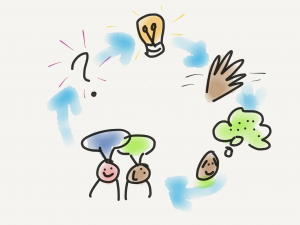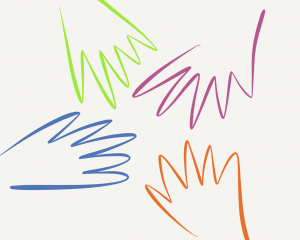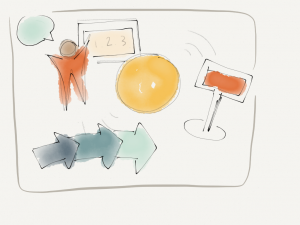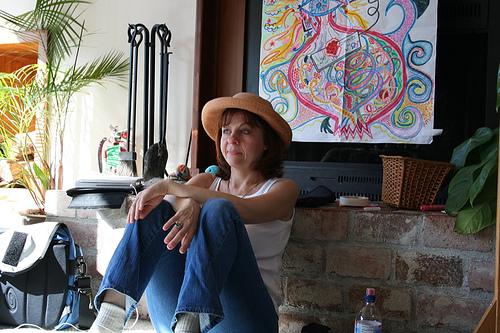 I was attracted by the title of a 2015 opinion piece in the Observer by Thomas Oppong @Alltopstartups, 33 Websites That Will Make You a Genius. If only! Apparently so were many other people because if you search on the title and first sentence, you will see the article republished all over the place. I had tucked the url into a draft blog post that I’m finally getting to today! (Note: there are actually 34 on the list. Brainpickings did not get a number. Brainpickings, by the way, is one that I’d prioritize reading!)
I was attracted by the title of a 2015 opinion piece in the Observer by Thomas Oppong @Alltopstartups, 33 Websites That Will Make You a Genius. If only! Apparently so were many other people because if you search on the title and first sentence, you will see the article republished all over the place. I had tucked the url into a draft blog post that I’m finally getting to today! (Note: there are actually 34 on the list. Brainpickings did not get a number. Brainpickings, by the way, is one that I’d prioritize reading!)
Why are people interested in these lists? Are they really going to go out and working on getting smarter? Does anyone have time to read them on a regular basis? For me it is an interesting reminder that there is so much interesting stuff out there we must both use it and not let it overwhelm us. Or let lists limit us because the diversity is much richer than can ever be boiled down to 33 or 34.
The question I sit with is WHY are these 33 websites considered so valuable? Is it the website, the artifact, or the people who make them, individually, collectively and everything in between! What if instead of listing these sites, we had a chance to sit down and have a meal with the people behind them. Now THAT would be WONDERFUL! Here is the list with Thomas’ annotations – and thank you Thomas! At the end I leave you with a question similar to the one Thomas left at the end of his article.
1. BBC — Future — Making you smarter, every day.
2. 99U (YouTube) — Actionable insights on productivity, organization and leadership to help creative people push ideas forward.
3. Youtube EDU — The education videos that don’t have cute cats in boxes — but they do unlock knowledge.
4. WikiWand — A slick new interface for Wikipedia.
5. The long read (The Guardian) — In-depth reporting, essays and profiles.
6. TED — Great videos to open your mind on almost every topic.
7. iTunes U — Learning on the go, from some of the world’s top universities.
8. InsightfulQuestions (subreddit) — Intellectual discussions that are not necessarily genre-specific.
9. Cerego — Cerego helps you build personalized study plans based on your strengths and weaknesses to retain knowledge.
10. University of the People — Tuition-free online university that offers higher education in multiple course streams.
11. OpenSesame — Marketplace for online training, now with 22,000+ courses.
12. CreativeLive — Take free creative classes from the world’s top experts.
13. Coursera — Partnering with some of the top U.S. universities, Coursera offers massive open online courses for free.
14. University of reddit — the product of free intellectualism and is a haven for the sharing of knowledge.
15. Quora — You ask, the net discusses — with top experts and fascinating back and forth on everything.
16. Digital Photography School —Read through this goldmine of articles to improve your photography skills.
17. Umano—Explore the largest collection of audio articles powered by real people. Dropbox has acquired Umano. Brain Pickings is a great replacement for 17.
Brain Pickings — Insightful long form posts on life, art, science, design, history, philosophy and more.
18. Peer 2 Peer University or P2PU, is an open educational project that helps you learn at your own pace.
19. MIT Open CourseWare is a catalog of free online courses and learning resources offered by MIT.
20. Gibbon—This is the ultimate playlist for learning.
21. Investopedia — Learn everything you need to know about the world of investing, markets and personal finance.
22. Udacity offers interactive online classes and courses in higher education.
23. Mozilla Developer Network offers detailed documentation and learning resources for web developers.
24. Future learn — enjoy free online courses from top universities and specialist organizations.
25. Google Scholar — provides a search of scholarly literature across many disciplines and sources, including theses, books, abstracts and articles.
26. Brain Pump — A place to learn something new everyday.
27. Mental Floss — Test your knowledge with amazing and interesting facts, trivia, quizzes and brain teaser games.
28. Learnist — Learn from expertly curated web, print and video content.
29. DataCamp — Online R tutorials and data science courses.
30. edX — Take online courses from the world’s best universities.
31. Highbrow — Get bite-sized daily courses to your inbox.
32. Coursmos — Take a micro-course anytime you want, on any device.
33. Platzi — Live streaming classes on design, marketing and code.
If you had to suggest one website that presented a more diverse perspective or represented views that don’t often make into lists like the ones above, what site would you recommend I look at?



